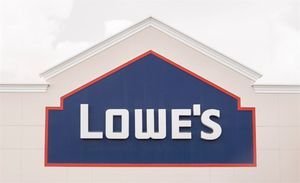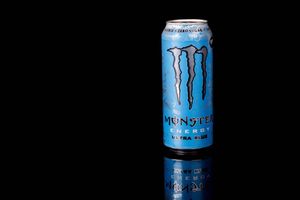
Automotive retailer Lithia Motors (NYSE: LAD) fell short of the market’s revenue expectations in Q1 CY2025, but sales rose 7.2% year on year to $9.18 billion. Its non-GAAP profit of $7.65 per share was 2.8% below analysts’ consensus estimates.
Is now the time to buy LAD? Find out in our full research report (it’s free).
Lithia (LAD) Q1 CY2025 Highlights:
- Revenue: $9.18 billion vs analyst estimates of $9.37 billion (7.2% year-on-year growth, 2.1% miss)
- Adjusted EPS: $7.65 vs analyst expectations of $7.87 (2.8% miss)
- Adjusted EBITDA: $461.4 million vs analyst estimates of $406.3 million (5% margin, 13.6% beat)
- Operating Margin: 4.4%, in line with the same quarter last year
- Free Cash Flow Margin: 2.8%, similar to the same quarter last year
- Locations: 451 at quarter end, up from 387 in the same quarter last year
- Same-Store Sales rose 2.5% year on year (-1.9% in the same quarter last year)
- Market Capitalization: $7.96 billion
StockStory’s Take
Lithia’s first quarter results reflected the impact of ongoing market changes and operational adjustments, as management pointed to growth in new vehicle sales and aftersales as key drivers. CEO Bryan DeBoer noted that the company’s omnichannel approach, which integrates digital and physical retail, has begun to yield measurable gains in engagement and unit volume, particularly in its value auto segment and financing operations. DeBoer emphasized the adaptability of Lithia’s business model, especially its ability to offer a broad range of vehicle affordability options and to navigate shifts in consumer sentiment and tariffs.
Looking forward, management highlighted a disciplined focus on operational execution and capital allocation. CFO Tina Miller discussed ongoing efforts to lower selling, general, and administrative (SG&A) costs and to optimize the financing portfolio. DeBoer also reiterated plans to pursue targeted acquisitions within the United States, while maintaining flexibility for share repurchases given current market valuations. The executive team acknowledged potential volatility from tariffs and industry consolidation but expressed confidence in Lithia’s ability to increase market share and deliver consistent profitability across its expanding footprint.
Key Insights from Management’s Remarks
Lithia’s management attributed Q1 performance to a combination of diversified product offerings, cost discipline, and the maturing of key business adjacencies. The company’s ability to adapt to tariffs and maintain operational flexibility was a recurring theme throughout the call.
-
Tariff Resilience and Inventory Management: Lithia’s product mix, with about 45% of inventory unaffected by current tariffs, helped cushion the impact of supply chain disruptions. Management noted that recent inventory reductions improved cost efficiency, with new and used vehicle days’ supply falling by nearly 10 days sequentially.
-
Growth in Value Auto Segment: The value auto segment, targeting affordability-conscious buyers, saw a 39% year-over-year increase in sales. DeBoer explained this segment is less sensitive to tariffs and general market fluctuations, supporting Lithia’s strategy of serving a wide range of customer needs.
-
Financing Operations Expansion: The Driveway Finance subsidiary reported a significant sequential increase in loan originations and improved net interest margin. Management emphasized the importance of this adjacency, noting its higher contribution to earnings relative to traditional indirect lending.
-
After-Sales and Service Strength: Aftersales gross profit rose 7.5% year over year, driven by both warranty and customer-pay work. Management highlighted the potential to further expand capacity and utilization in this high-margin business.
-
SG&A Efficiency Initiatives: The company reduced SG&A as a percentage of gross profit, building on its “sixty-day plan.” Management aims for ongoing monthly improvements, driven by both personnel cost optimization and vendor consolidation, while leveraging technology upgrades like the Pinewood software system.
Drivers of Future Performance
Management’s outlook for the remainder of the year centers on maintaining operational flexibility in the face of tariff-related uncertainty, leveraging adjacencies, and disciplined capital allocation.
-
Tariff Environment Adaptability: Lithia’s diversified inventory and ability to adjust mix position it to respond to potential tariff changes and supply chain shifts, limiting exposure compared to peers more reliant on affected imports.
-
Adjacency Contribution and Ecosystem Scaling: The company’s ecosystem, including financing, aftersales, digital platforms, and fleet management, is expected to deliver incremental earnings growth and enhance customer retention.
-
Cost Discipline and Capital Allocation: Ongoing SG&A reduction, targeted acquisitions in profitable regions, and balanced share repurchases are expected to underpin profitability. Management flagged personnel and vendor cost reductions, as well as operational scale, as critical levers for further margin improvement.
Top Analyst Questions
-
Ryan Sigdahl (Craig Hallum Group): Asked about the impact of tariffs and inventory levels on demand trends. DeBoer explained that Lithia’s diversified inventory lessens tariff exposure and that recent inventory reductions position the company well for future quarters.
-
John Murphy (Bank of America): Inquired about the role of adjacencies like Driveway Finance and whether margin trade-offs are considered to gain market share. DeBoer stressed that transparent pricing and expanded financing help attract more customers, while maintaining gross profit per vehicle.
-
Rajat Gupta (JPMorgan): Sought clarification on SG&A trends and the sustainability of recent improvements. Miller responded that disciplined execution and technology initiatives are driving cost reductions, with further opportunities identified for the second half of the year.
-
Jeff Licht (Stephens): Focused on the value auto segment’s sales dynamics. DeBoer detailed how value autos appeal to cash buyers and turn over faster than certified used vehicles, supporting capital efficiency and customer acquisition.
-
Bret Jordan (Jefferies): Queried aftersales growth potential amid tariffs and regional profit differences. DeBoer highlighted that aftersales demand is relatively inelastic, and that certain regions, especially in the South, remain more profitable due to regulatory and fee structures.
Catalysts in Upcoming Quarters
In the coming quarters, the StockStory team will monitor (1) Lithia’s ability to further expand its value auto and aftersales segments, (2) progress toward SG&A efficiency targets and technology-driven cost savings, and (3) execution of strategic acquisitions and capital allocation priorities. We will also track how the company adapts its inventory and pricing strategies in response to ongoing tariff developments and shifting consumer demand patterns.
Lithia currently trades at a forward P/E ratio of 8.6×. Should you load up, cash out, or stay put? Find out in our free research report.
Stocks That Overcame Trump’s 2018 Tariffs
The market surged in 2024 and reached record highs after Donald Trump’s presidential victory in November, but questions about new economic policies are adding much uncertainty for 2025.
While the crowd speculates what might happen next, we’re homing in on the companies that can succeed regardless of the political or macroeconomic environment. Put yourself in the driver’s seat and build a durable portfolio by checking out our Top 9 Market-Beating Stocks. This is a curated list of our High Quality stocks that have generated a market-beating return of 176% over the last five years.
Stocks that made our list in 2020 include now familiar names such as Nvidia (+1,545% between March 2020 and March 2025) as well as under-the-radar businesses like the once-small-cap company Exlservice (+354% five-year return). Find your next big winner with StockStory today.






